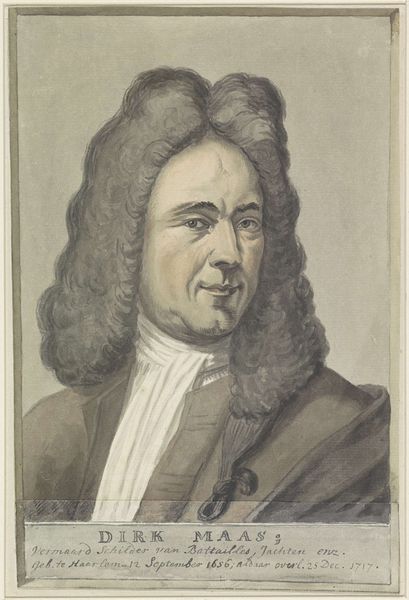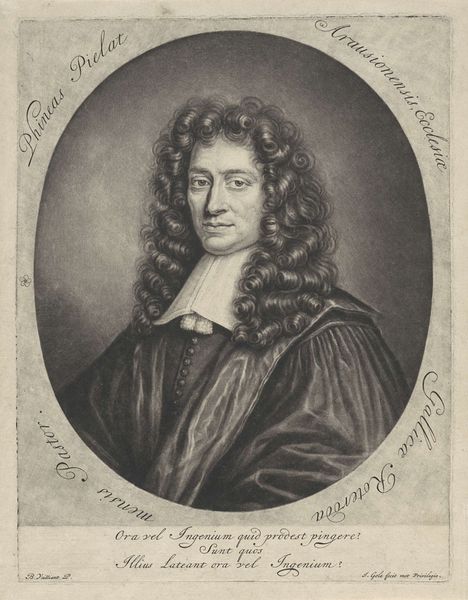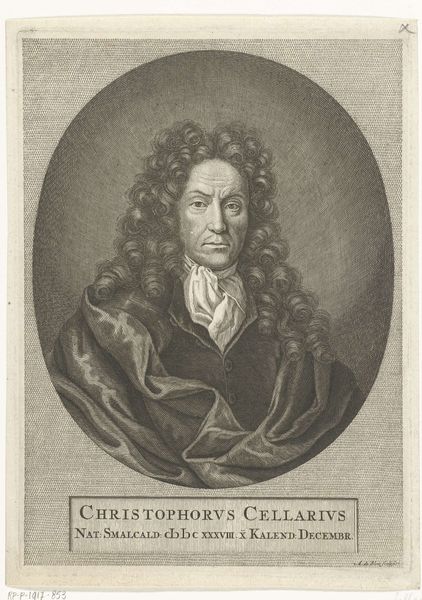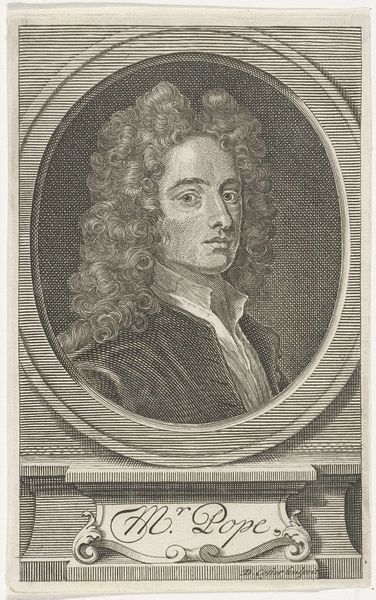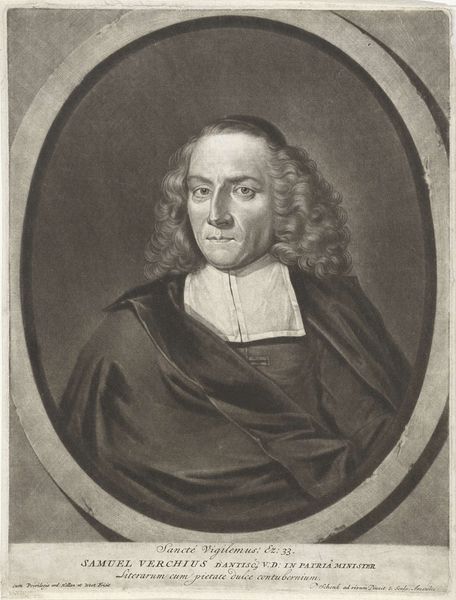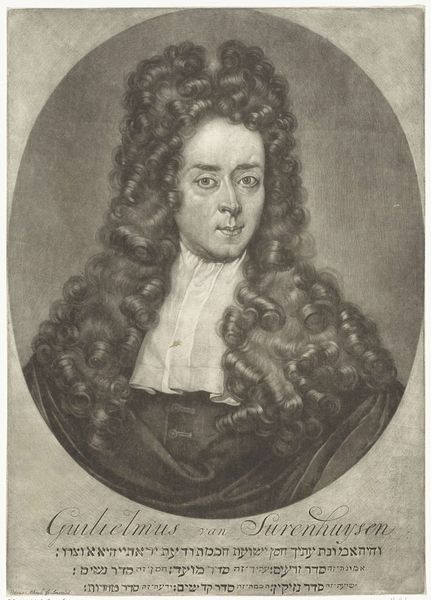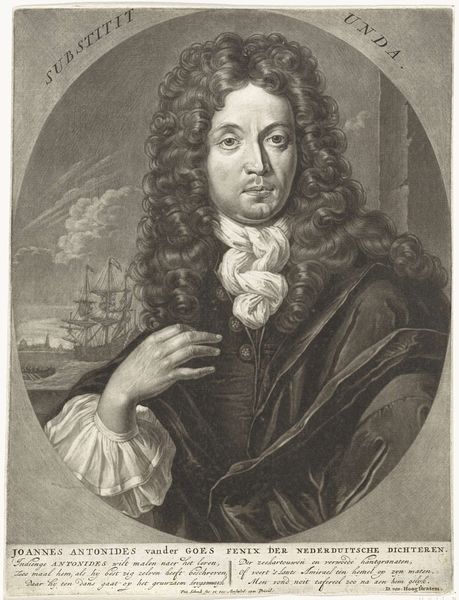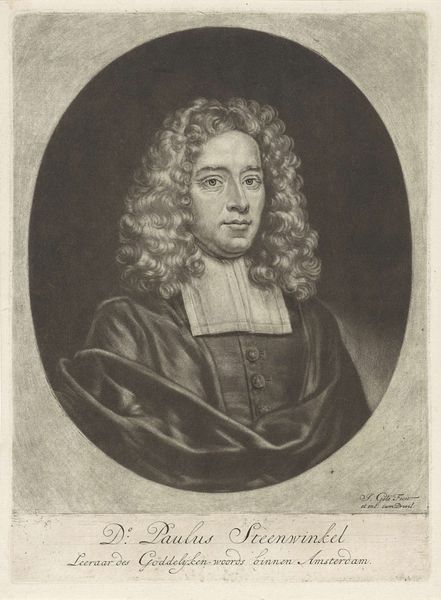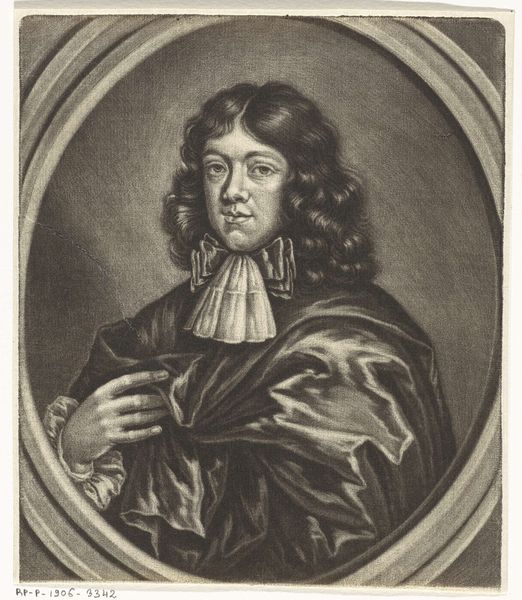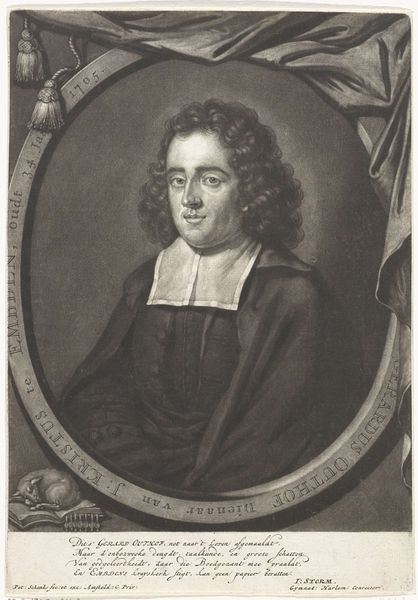
print, engraving
#
portrait
#
self-portrait
#
baroque
# print
#
history-painting
#
engraving
Dimensions: height 330 mm, width 146 mm
Copyright: Rijks Museum: Open Domain
Curator: This is "Portret van de predikant Johann Heinrich Caulius," a Baroque engraving made sometime between 1670 and 1713 by Pieter Schenk. It's part of the Rijksmuseum's collection. Editor: My first impression? Quiet dignity. The monochrome palette concentrates the eye, doesn't it? Curator: Absolutely. Schenk has crafted an image that resonates with the gravitas expected of a clergyman. The use of engraving, as opposed to another medium, suggests a permanence and solemnity, reinforcing the status of the subject. Notice the deliberate composition. Editor: Yes, the oval frame contains the figure, adding a layer of formality. What symbols stand out for you? Curator: The hands are quite evocative, gently resting as if imparting wisdom. It subtly conveys his role as a guide and mentor. Furthermore, consider the turbulent Baroque era from whence it originated, full of political and spiritual conflict, to get the full import. Editor: And look at the light play—careful hatching gives his robe volume, while emphasizing the textures in his rather ornate wig. What psychological layers do you perceive beneath that controlled surface? Curator: I sense an underlying seriousness, but also a weariness. Serving as "advisor" requires bearing weighty issues, doesn’t it? The downward glance and slight furrow in his brow, suggests he is constantly engaged in sober consideration. Editor: So much character conveyed through careful control of light, shadow, line. Schenk created an enduring record using a rather humble print. Curator: The impact extends beyond the personal; the Caulius family name meant something in that period and geographic region. The image would carry historical, social, and personal memories, continuing far into our own present day. Editor: Fascinating!
Comments
No comments
Be the first to comment and join the conversation on the ultimate creative platform.
